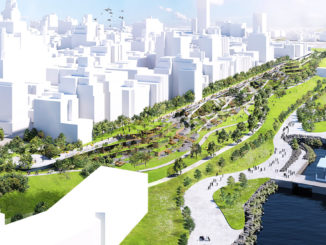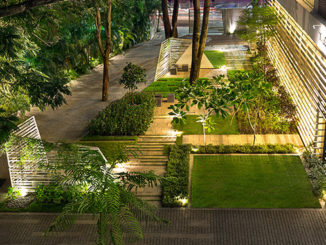New York Times recently published When Parks Must Rely on Private Money by DIANE CARDWELL concerning the struggles of cities to fund the construction and maintenance of parks throughout the USA. Many parks are funded through selling of land or revenues generated by carparks or taxes from new nearby developments and others are funded by residents and companies donating funds in return for naming rights or plaques. Cardwell cites examples of parks that have been constructed with the use some private funding including Millennium Park in Chicago and the Highline and with the tradeoff causing issues in some cities.
The article stimulated a few ideas I have had during my career. I find that funding of new or redevelopment of parks is a often a fine line between private and public funding, which often blurs the line between public and private space. Private funding often causing issues with residents because of naming or commercial activities in the new park that create a private area.
An ever-growing trend for cities around the world is to justify the cost of construction and maintenance of parks through inclusion of private funding or commercial activities such as paid parking garages, retail shops, restaurants, or areas that are commercialised for entertainment(concerts, festivals, etc). How to strike a balance between private and public funding is very complicated process for each city and requires research and consultation.
Many cities find it hard to redevelop parks with the use of public money as it is often controversial as parks are sometimes seen by residents as non-essential. Residents see hospitals, schools, and police as essential services within the community whereas parks are seen as non-essential and that public monies would be better spent on other services. To avoid this cities seek private funding in return for naming rights or a commercial development on or near the park. Now the question is how far to go with private funding and how much is the park compromised by accepting the funding in return for naming right or commercial development?
This issue of public and private funding will become more and more prevalent around the world as developers of retail and residential developments blur the line between public and private space by creating spaces in developments that are town squares and parks that can be accessed by the public. This blurring will cause some confusion with city residents as to what is public space and what is private. It also raises the question – Are developers going to develop parks and maintain them or will it always remain the domain of the local government?
Private development of public parks as apart of residential developments or commercial developments, which are then handed to government after certain period is already occurring in some parts of the world. Will this become a growing trend across cities for small and large parks? Or will it remain only in residential developments?
By Damian Holmes

![Reblog this post [with Zemanta]](http://img.zemanta.com/reblog_e.png?x-id=957d6221-912d-4791-b16d-27d93658eab6)


